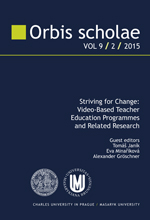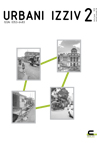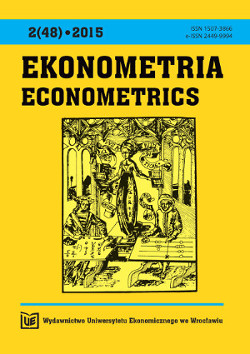
We kindly inform you that, as long as the subject affiliation of our 300.000+ articles is in progress, you might get unsufficient or no results on your third level or second level search. In this case, please broaden your search criteria.




Housing aspiration is an important aspect of housing market analysis. However, there is a paucity of empirical research on housing aspiration among residents in informal settlements in developing countries. This study therefore investigated housing aspiration among the residents of Ayobo, Lagos, Nigeria. A cross-sectional survey of 1,151 households in Ayobo was conducted using a structured questionnaire as the data-collection instrument. The data were analysed using descriptive statistical and categorical regression analyses. The results show that a majority of the respondents were low-income earners living in rented and rooming-house types of accommodation. Around 73% of them expressed an intention to move to another residence, and 56% of this category of respondents intend to move into self-contained flats. The reasons for the planned relocation include poor condition of their present dwellings, changes in tenure status and household size, and the desire for exclusive use of facilities in their homes. In addition to these reasons, the waste-disposal method, sharing facilities, employment, and age and marital status of the residents emerged as the strongest predictors of housing aspiration among the respondents in the survey. This implies that, in order to meet the housing preferences and aspirations of residents in informal urban settlements in Nigeria, housing developers need to give adequate attention to the marital, age, employment and tenure status of the residents and place emphasis on developing affordable single-family houses and block of flats, as well as strategies for improving access to basic social amenities and services.
More...

The main purpose of the article is to describe the state of the art in using big data in official statistics. The article presents selected examples of how data from mobile operators, sensors, social media or scanners are used by national statistical offices. The authors also identify chances, challenges and risks related to the use of big data in the field of official statistics.
More...

Research problem analysed in the paper concentrates on the impact of the choice of scale on the the goodness of fit of the Structural Equation Model. For that purpose the primary research tool were built and used for conducting two rounds of research. In the first round two groups of respondents were given two different questionaries dealing with the same research problem (same set of research questions) but using different, 5 or 10 point scales. After one week the same groups of respondents were asked again to assess the research problem by using different type of scale. Obtained empirical data were used to build the structural equation models (for 5 and 10 point scales) of the analysed research problem. Thanks to the collected empirical data it was possible to analyze the impact of the choice of scale on internal (AVE, Cronbach’s Alfa, Composite Reliability) and external (R2) goodness of fit of the model.
More...
Measurement of consumer preferences is one of the most important elements of marketing research. In the measurement of consumers’ preferences Maximum Difference Scaling can be used. In this method, a fractional factorial design is used as the experiment, where a limited set of profiles (product or service) is taken into account. The resignation of full factorial design, in which the number of profiles exceeds the ability of respondents to assess, means choosing one of many possible factorial designs. The aim of this article is to present the results of the measurement of consumers’ preferences based on different fractional factorial designs using Maximum Difference Scaling. The article presents the results of measurement of consumers’ preferences using asymmetric, symmetric and balanced factorial designs and the MaxDiff R package.
More...

When dealing with real data situation we often have a binary (biomial, dichoto-mous) dependent variable. As the linear probability model is not such a good solution in such a situation there is a need to use nonlinear models. A quite good solution for such a sit-uation is the logistic regression model. The paper presents an adaptation of linear regression model when dealing with symbolic interval-valued variables. Four approaches poposed by de Souza et. al [2011] how to apply such variables are presented. In the empirical part re-sults obtained with the application of artificial and real data sets are shown. The best results are obtained for midpoint and bounds (joint estimation) methods.
More...
The main objective of this article is to present the patterns of Polish employers’ perception of competences of higher education graduates in the context of labor market needs. The analyzes are carried out on the basis of survey data collected and made available by the Flash Eurobarometer. Since the set of variables under consideration contains only non-metric data, some selected visualization techniques (fluctuation diagrams, relative multiple barcharts) are applied to identify the regularities. Categorical principal components analysis and its graphical representation are used to analyze the interdependences among the considered competences. The results indicate that Polish employers evaluate the skills of the graduates rather positively, but they also recognize the competency gaps in various areas.
More...

This paper presents a proposal for process control applications based on econo-metric models. They are a tool which aim is to determine short-term forecasts, which are the basis to control the devices of production infrastructure. The article describes the application of the method of forecast errors corrective device in a real production process. Econometric models are presented: the exponential smoothing model and creeping trend adaptive model with harmonic scales. The calculations are used and the regression function is indicated by the linear programming problem. The method is presented on the example of classical tech-nological process used in the energy sector. The study indicates the possibility of another perspective on the control processes, not necessarily based on the existing methods of regu-lation. The idea of this study is to demonstrate the possibility of using econometrics in the industry.
More...
In this paper there was conducted a statistical analysis of the impact of the distribution of unsystematic gaps on the accouracy of inter- and extrapolative forecasts in the seasonal time series. In the analysis, as variable, there was used the average period of stay of tourists in accommodation establishments in the West Pomeranian Voivodeship in the years 2008-2013. In calculations there were used simulation methods to generate ten thousand sets of gaps for the three variants, differed in the number of gaps. For all the set and variants of gaps, there were estimated time series models with exponential trend and relatively-fixed seasonality. In the next step there were built inter- and extrapolative forecasts and calculated their relative errors (MAPE). In the analysis there were used R program and Statistica 10.
More...

Stanovanjske aspiracije so pomemben vidik analize stanovanjskega trga, vendar obstaja le malo empiričnih raziskav stanovanjskih aspiracij prebivalcev neformalnih naselij v državah v razvoju. Zato avtorji v tej raziskavi preučujejo stanovanjske aspiracije prebivalcev neformalnega naselja Ayobo v Lagosu v Nigeriji. Izvedli so presečno raziskavo 1.151 gospodinjstev v naselju, pri čemer so kot orodje za zbiranje podatkov uporabili strukturirani vprašalnik. Podatke so preučili z opisno statistično in kategorično regresijsko analizo. Rezultati so pokazali, da ima večina anketirancev nizke dohodke in živi v najemniških stanovanjih ali sobah v skupnih hišah (ang. rooming houses). Približno 73 % anketirancev se namerava preseliti drugam; od teh se jih 56 % namerava preseliti v stanovanja z lastno kuhinjo in kopalnico. Razlogi za selitev so slabo stanje trenutnih bivališč, spremembe lastništva in velikosti gospodinjstva ter želja po uporabi lastne kuhinje in kopalnice. Poleg teh razlogov so se način odstranjevanja odpadkov, skupna raba kuhinje in kopalnice, zaposlenost, starost in zakonski stan izkazali za dejavnike, ki so najbolje napovedali stanovanjske aspiracije anketirancev. To pomeni, da bi morali gradbeni investitorji za to, da uresničijo preference in aspiracije prebivalcev nigerijskih neformalnih naselij, nameniti ustrezno pozornost zakonskemu stanu, starosti, zaposlitvi in lastništvu stanovalcev ter dati poudarek gradnji cenovno dostopnih enodružinskih hiš in stanovanjskih blokov, kot tudi strategijam izboljšanja dostopa do osnovne infrastrukture in storitev.
More...

